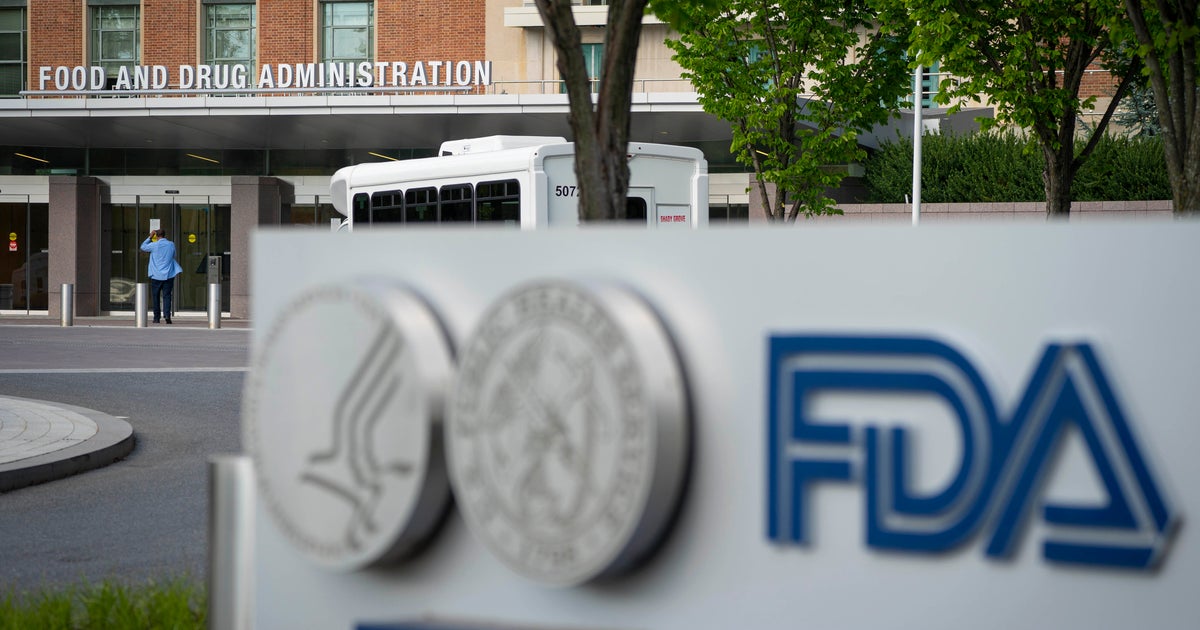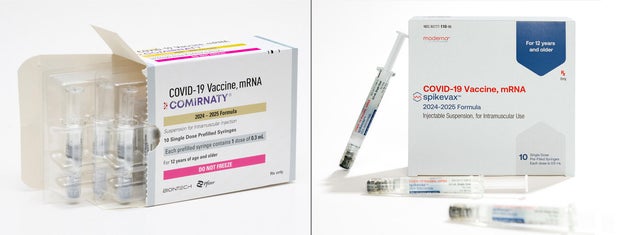The Food and Drug Administration announced Thursday that it has cleared updated COVID-19 vaccines from Pfizer and Moderna for the fall 2024 season. The decision clears the way for distribution of the latest version of the shots to begin earlier this year than last year.
The vaccines from Moderna and Pfizer were revised this year to KP.2 variant of SARS-CoV-2, the virus that causes COVID-19, as part of a now annual process conducted by the FDA and health authorities around the world to update vaccines to protect against newer strains of the virus.
“Given the waning population immunity resulting from past exposure to the virus and prior vaccination, we strongly recommend that everyone who is eligible get vaccinated with a current COVID-19 vaccine to provide greater protection against the variants currently circulating,” said Dr. Peter Marks, director of the FDA’s Center for Biologics Evaluation and Research.
Similar to previous seasons, the Centers for Disease Control and Prevention recommends that all Americans ages 6 months and older get vaccinated with the “Updated 2024–2025 COVID-19 Vaccine” to protect against another expected increase in virus cases in the fall and winter.
In a presentation to the American Medical Association earlier this month, CDC Director Dr. Mandy Cohen recommended beginning to administer COVID-19 vaccines later this year as soon as they become available.
“Then the government should continue its work until September, October and November. Those are the months that really need to be paid attention to,” she said.
Both Moderna and Pfizer expect the first doses of their vaccines to be available across the country in the next few days. Another updated vaccine from Novavax is also expected to receive FDA approval this year.
Pfizer / Moderna
“The FDA is committed to advancing regulatory approval expeditiously. We expect to receive approval in time for peak vaccination season,” Novavax said in a statement.
Why are current COVID-19 vaccines being introduced now?
Since last winter, health authorities have been working to accelerate this year’s rollout of COVID-19 vaccines.
There were numerous glitches in the vaccine rollout in late September last year that likely led to a drop in vaccination rates, CDC officials said in February. These included confusing messaging and difficulties for patients to get the shots.
Instead, COVID-19 vaccines will be available this year around the same time that flu shots arrive in clinics. That’s the result of an earlier vote by the CDC to recommend the shots for the summer and an earlier selection by the FDA of the strain the shots will target, bringing the decision closer to the annual process of updating the seasonal flu vaccine.
For most people, the CDC recommends a flu shot in September or October each year. This can be given at the same time as the COVID-19 vaccine.
“If you have someone in front of you and you have the opportunity to give them the vaccine, co-administration is the best approach. That’s why we recommend it,” said Dr. Demetre Daskalakis of the CDC at the AMA event.
Health officials have long acknowledged that the rollout of the new COVID-19 vaccines this year would likely come too late for many Americans infected with COVID-19. the wave of this summer from the virus.
“It’s very difficult to time the COVID vaccine to coincide with an upcoming surge, so I think we’re left with no choice but to try to time it to coincide with the respiratory virus season while also thinking about uptake when people get their flu shots,” Dr. Ruth Link-Gelles of the CDC told a panel of FDA advisers in June.
Why are the shots aimed at the KP.2 variant?
The new vaccines from Moderna and Pfizer target the KP.2 variant, which is a descendant of the JN.1 strain which were partly responsible for the increase in infections last winter.
The decision to target KP.2 deviates from the recommendation of the World Health Organization and some other countries that had called for vaccinations against the JN.1 variant.
Pfizer and Moderna presented initial data on vaccines against KP.2 and JN.1 to an FDA panel of outside vaccine advisers in June as the companies prepared to ramp up production.
While FDA advisers urged the agency to focus on JN.1, the agency itself rejected the committee’s advice, citing the “recent surge in cases” and instead targeted KP.2 to “better match” the newest strains.
However, the proportion of KP.2 in infections has been declining for months. Another strain called KP.3.1.1 spread rapidly during this summer’s wave. More than a third of cases are now due to KP.3.1.1, the CDC estimates.
While differences between strains may have some impact on how effective vaccinations are this fall and winter, scientists say the gap between the different variants is still relatively small compared to previous surges in virus spread.
“All of these viruses that are currently circulating are very, very similar, even though they have very different names. So it’s just a nomenclature issue why there are these different-sounding names,” Natalie Thornburg of the CDC said Monday in a conference call with testing laboratories.


